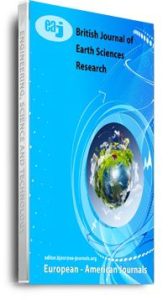Soil geochemical study aimed at determining the background levels of trace and major elements in soils of a relatively small part (MAUTECH Campus) of Girei District has been carried out. The results show that the contents of trace and major elements in the area are generally low and vary by factors ranging from about 3 times (As, V), about 4 times (Ni, W), about 6 times (Cd, Rb, Be), about 10 times (Cr, Ba, Br), about 7 times (Se), about 18 times (Mo), about 30 times (Co) and about 45 times (Pb). The low contents reflect the granites and migmatite gneisses bordering the study area and suggest that the soil was derived from these granites with little contribution from the mafic gneisses. Correlations amongst elements are significant at the probability level of 0.01. Among the major elements; Mg has a strong positive relationship with Ca (0.88), and Al (0.74) while Fe is also strongly related to Al (0.69). Several trace elements have very strong positive relationship with one another: Ba-As (0.91), Be-As (0.93), Be-Ba (0.91), Cs-Ba (0.91), As-Cs (0.85), Cr-Ba (0.85), Cr-Be (0.85), Cs-Be (0.88), As-Ce (0.94) and Cs-Cr (0.86). Mn and Mo are poorly related with most of the trace elements. Among the rare earth elements, Eu is strongly related to Dy (0.98), Gd (0.99) and Lu (0.96) just as Dy is strongly related to Er (0.99), Eu (0.98), Gd (0.98) and Lu (0.98). These strong positive correlations among elements suggest that chemical and physical factors control elements associations in parent materials and soil forming processes. Consequently, the data may serve as a reference standard in the assessment and monitoring of possible future environmental issues related to trace and/or major element contamination
Keywords: Background Geochemistry, Benue Trough, Girei, Nigeria

